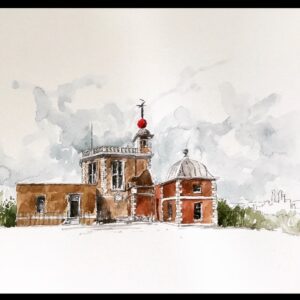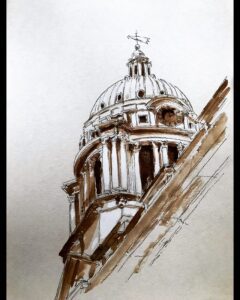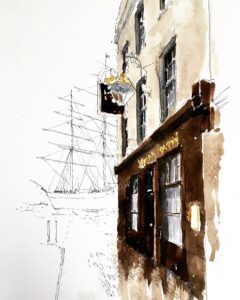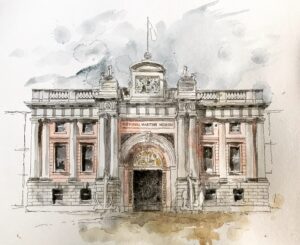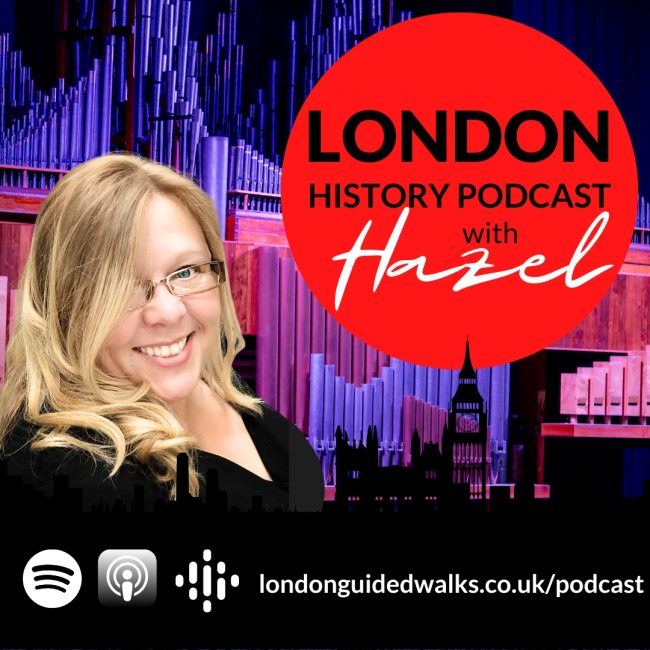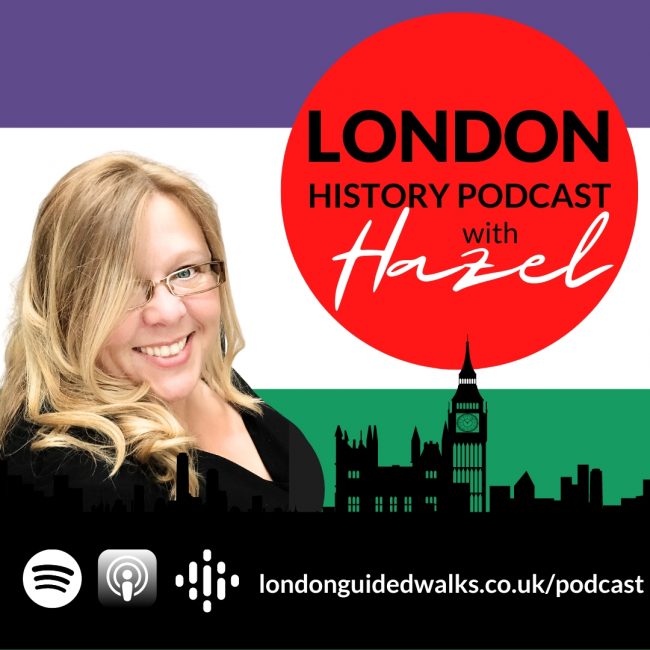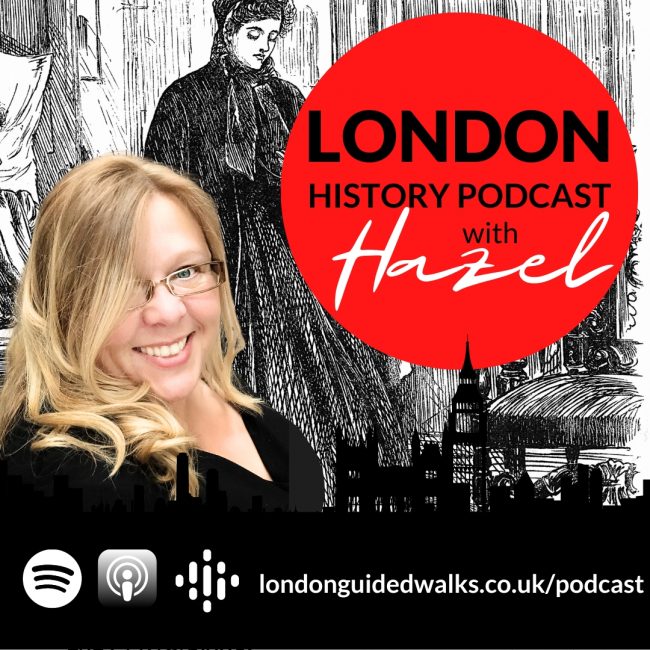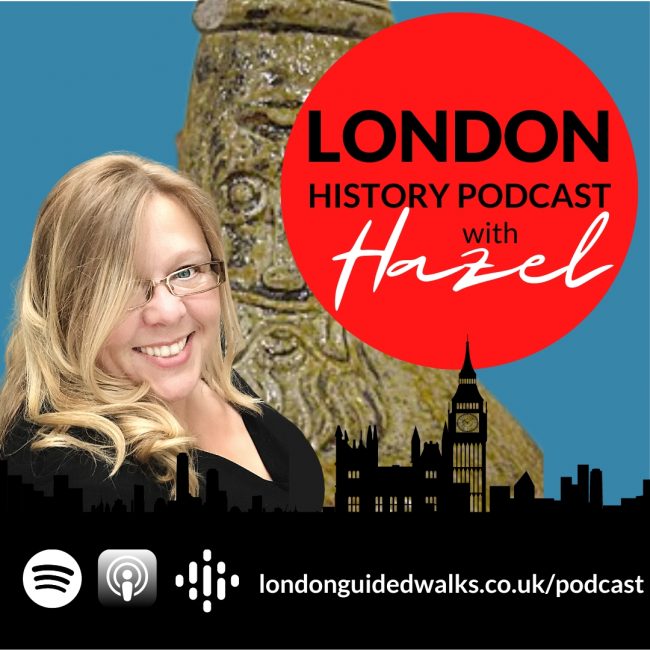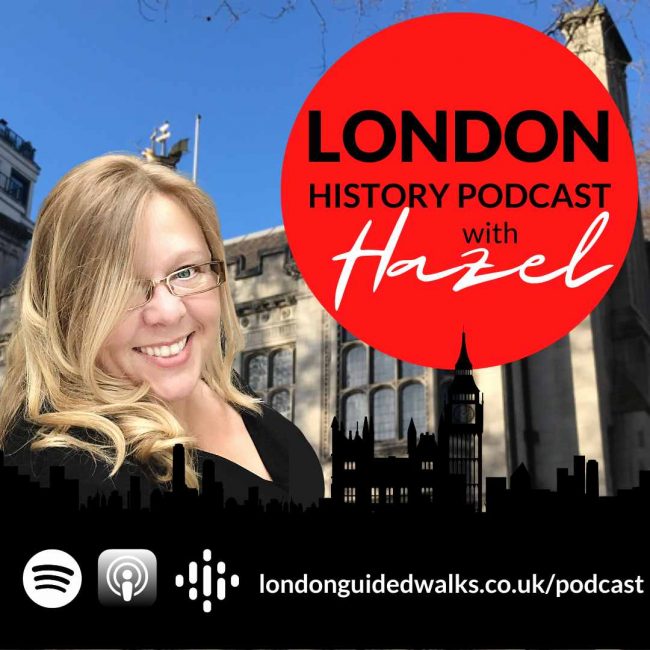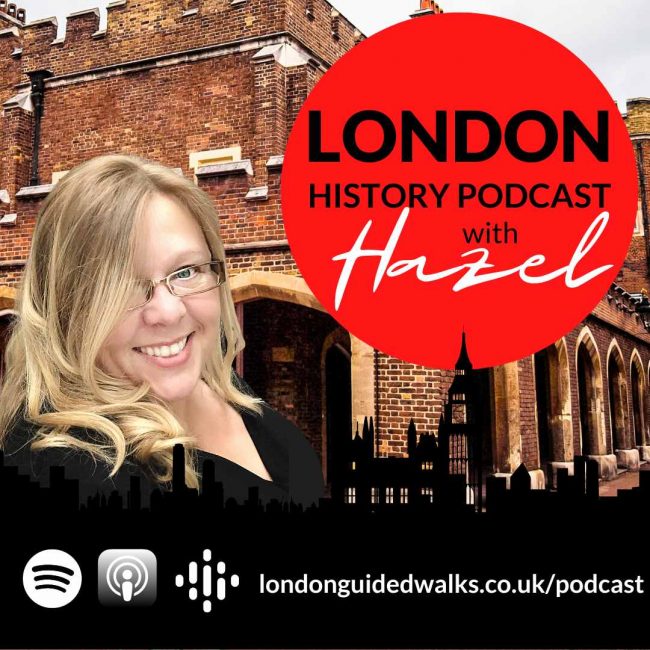See the artworks we discuss in this episode here
Show Notes:
 Hazel Baker: Hello and welcome to London Guided Walks London History podcast. In the coming episodes, we will be sharing our love and passion for London, its people, places and history in an espresso shot with a splash of personality. For those of you who don’t know me, I am Hazel Baker, founder of London Guided Walks, providing guided walks and private tours to Londoners and visitors alike.
Hazel Baker: Hello and welcome to London Guided Walks London History podcast. In the coming episodes, we will be sharing our love and passion for London, its people, places and history in an espresso shot with a splash of personality. For those of you who don’t know me, I am Hazel Baker, founder of London Guided Walks, providing guided walks and private tours to Londoners and visitors alike.

Christian Coop
Architect and Illustrator
Instagram
Hazel Baker: So tell me what you think Christian, is a building is more beautiful when you know what it is and know the type of people who are using it, who designed it? It’s the whole story, rather than just a standalone building.
Christian Coop: It is. I mean, I think, I think that’s, that really hits the nail on the head is that, you know, we will, people like stories, I mean, uh, and, and buildings, uh, kind of the end of the story in terms of, from a sort of an object for that story.
There’s always a purpose for them and then they adapt. And all those changes are recorded and in a way, it’s a recording of the city and a recording of the way, the lives and stories of people that live there and to capture some of that is, is a really unique thing. And I think drawings do that uniquely well, because you personally capture subjectively what you find important in the building and what you find is those elements. So actually a big part of the narrative of the story, maybe the drawing actually lives on as part of that story in the future as well.
Hazel: Angles are important too, aren’t they? Your Tower Bridge image, you’re actually taking it from the foreshore, which is somewhere that it’s ongoing. We don’t really see the bridge from when you look up, you see more and more detail and more of the structure.
Christian: Yeah, you do. And it’s kind of a really beautiful place to strictly speak. Cause obviously you’re on the foreshore and that’s really, you know, the Thames is the base of London and a lot of the historical objects, you know? Yeah. You find it is on the Thames. I mean, you’ve called things wash up there.
There’s really the artery and it’s kind of going along the Thames is really like going back in time. So I do enjoy going along with the Thames, picking the buildings out, the merchant’s warehouses, and painting those as well.
Hazel: Yeah. It’s amazing. When you think about it like that, isn’t it. Does anybody stop you in the street and ask what you’re doing?
Christian: If it’s a highly detailed piece of work, days would go by. So I take photographs, sometimes I’ll take numerous photos and then start to draw. And from the details on that one. But if you do stand there and draw it, you do get a lot of people taking little glances and it does get distracting, but it’s kind of quite a nice little bit of performance art.
Hazel: I understand that you wanted to connect to the buildings more by drawing them, seeing the lines based on the architect in you, but there’s an artist as well, because these ones, I say technical drawings, this is art, isn’t it. So how do you bleed from one to the other then?
Christian: I do many technical drawings, et cetera. And I kind of think there’s a beauty in them as well. But it’s like words, like poetry, different representations have a different communication benefit. And I think a technical drawing is great to show people these acts absolutely what something is. A painting is all about what you don’t show. What people are more kind of attracted to for my paintings is actually where it sort of disappears around the edge, there’s a beauty in vagueness. You know in exactitude kind of allows us to warm in and it gives a little bit for the imagination to fill in.
And that’s why I think a lot of people who purchase my work over the years, I’ve kind of said it brings them joy. Time and time again, cause I keep looking at it. And the only reason you keep looking at something is because it gives you more with a photograph or static image or can’t join once you’ve seen it or it won’t give you any more. It’s completely open. So the beauty of something with a drawing, it will constantly give you more of the time and you will become part of that story.
Hazel: Now we’re talking about historic buildings, but with you being an architect. There’s a shocking lack of modern buildings in your artwork. Is that deliberate?
Christian: I originally started doing sixties buildings because it kind of is interesting to understand the connections. At the moment I was designing a modernist kind of building and a modernist in which to stay. And I was trying to understand the current surroundings.
Well, there’s two fold. One is obviously, as everyone will know, a modern glass building is not a very good painting challenge. It’s kind of a very challenging thing to do. There are buildings such as bars that have a lot of detail and interest, and some of them can work quite well. And in fact, I’ve painted the part but ultimately I think, for me personally as well, is that I, as a modern architect, I understand modernism is to understand this; it’s purpose and the way it expresses function and all those things.
But there is a side of modern architecture that doesn’t respect as much beauty and the need for ornamentation which is something that our four fathers kind of got a lot better and I think there is a bit of a move now for people, you understand that more including architects and understand what, how we can bring beauty and celebrate entrances and all sort of things in human proportion.
A bit more. So painting traditional buildings is a way of learning that, and every period has different things, you know? Georgian architecture is actually quite modernist. It’s very simple, plain facades. It relies upon proportions. And in fact, the model that Georgian architecture was a big one of the modernist movement.
Victorian Architecture is much more innate, but much bigger buildings are much stronger in terms of the just slap it on.
Christian: Yeah, really slap it on full on. We’re not going to mess about here because they mass details. So they had the potential to add a lot more detail to buildings. So those are the things I think, which will continue to occupy me for a whole lifetime. I could draw them forever and hopefully over time, that is beginning to merge into my actual architecture work.
Hazel: Obviously the big iconic things are obvious to go full, but how do you find or choose the lesser known places in London? Because I see your art and I go, ah, that’s well, it’s Woolwich Town Hall and you hadn’t said it but a lot of people wouldn’t, and it’s really quite an unusual building inside, not what you’d expect from seeing it on the outside. How do you find these places?
Christian: Sometimes it’s just from me walking around. There are some places I go, and I sometimes go to town halls, et cetera, but others, such as Woolwich Town Hall, someone contacts me and says “would you paint it for me?” And it’s amazing just how 99% of people ask me to paint really interesting buildings. And they asked me to paint and looking at it and go, ‘wow, that’s just beautiful’. And the colours, you know, the pinks, baby blues, just very beautiful and not what you’d expect from a very serious kind of civic building, which where you would expect to be, hard granite to give the power of the state, but it’s actually quite genteel, slightly under scaled and just a lovely space to be in.
London is so big and there’s so much to learn. And so all the people contact me and saying, “this looks great, look, check this out”. It is a really good way to understand more and see more and pay attention to more.
Hazel: That was brilliant because I do exactly the same with the podcast. I’m constantly bugging them to give me ideas to produce the episodes. Cause otherwise it’s just what I know and love and I don’t develop myself. Also I want to be able to make sure that my listeners get exactly what they need; if they want to know about a particular street name or a building, then I’ll go off and find about it.
Christian: It’s an adventure for me as well, because as you said, London is such a vast place. There’s so much history, so many gorgeous buildings, um, and hidden history is that you just. Don’t know that until you start looking and taking things apart and taking the time to, to understand the space. Well then anything else I suppose.
Hazel: Yes, absolutely. Absolutely. So do you have a particular era or that you liked drawing because you mentioned about the, uh, the, the, the. The beauty of the simplified Georgian or do you like the Gordy Victoria?
Christian: I think being an architect means that you kind of sit on the fence with each style, uh, or put it another way is like, it’s like children; you kind of love them equally, but for different reasons. And I think the draw with Victorian it is really a beautiful kind of thing. And again, that’s a style that kind of gets missed or actually as I’m drawing more and more. I can just understand the details around the windows and how a decoration drips down in certain areas, which is kind of interesting. Tudor is kind of nice, even though there are not many examples in London now, but a lot of them got bricked over, but you still got some really, really kind of interesting ones. And especially how, the way you decide to break off quite often, the stone stone framing, stone grey base with timber above.
That’s kind of lovely. I really could not say a favour, but I think overall, in terms of drawing it in detail, the most probably sophisticated is the late Victoria period in terms of how that works actually. But another one that kind of gets missed is art deco. I think that’s something else that has a great heritage around the time and the place. And that kind of heritage often fits really well between Victorian and the modern buildings, because it takes a bit from both it’s decorative, but also quite, quite focused on it in the way it’s arranged. So I think that’s kind of something that’s. I think those in-between styles, the queen arms to the art deco is becoming a bit of an interest, pure detail beauty all the way.
Hazel: I like the attitude of the Victorians of like “we are here, we exist and therefore we shall be”, and not apologise for it. And everything they did, whether it was architecture, clothing, or indeed the tills that they use. Everything has a form and a function, but it also has a deliberate beauty as well.
Christian: And, and it’s exciting, they kind of put the sewage system, the great exhibition, it was just done, everything was done so well and actually, the thinking around that time and the changing from understanding the laws of natural selection and Darwin right through to the early seeds of modernists and functional thought and expression of structure. You can kind of find most of it in that Victorian period. And as we’ve said, the narrative is in the building. So if you look at the buildings, you will see elements of this, the natural history museum with its numerous animals and foliage, a kind of decoration. Alfred Waterhouse’s masterpiece is a fantastic example of that.
Hazel: Now you mentioned before about how you like to go back to places. You also said you love them all equally, as if they’re your children, but that’s a lie, isn’t it?!
In the morning when you’ve put in your diary that you go somewhere and you go “Oh yes!”.
Christian: I think I’d say more about places. I live in South London, so my local station is London Bridge and I kind of enjoy London Bridge because you come out, you’re in a Victorian station, but it’s also modern.
And then you’ve got More London which is very modern but has nice spaces. And then you’ve got these great vistas, where you can see all of London and the Tower Bridge, and then you’ve got Shad Thames with fantastic warehouses and you can just soak up the history and you really feel the different shadows and traces of past and the things that happened in those places. So I can see it all. I think that’s my favourite area, and rich for just popping into town and doing a bit of sketching.
Hazel: I’m South East London myself. I come in through London Bridge. So when you look at my Instagram @walk_london, so many of my posts are from around the London Bridge area, because there’s so many different facets to that area. Not only have you got the old industrial heritage, the tanneries and the wool trades. And then you’ve got the Hartley’s jam factory and all that kind of stuff.
You’ve now got the beautification of it as well. And now the Hop Exchange etc, now having been redone and repainted, you can really see the beauty that they would have had when they first opened.
Christian: Yeah. And then it is a place of change as well, especially as a tourist destination. South bank now, with walking along the river there’s The Anchor Pub. You could watch London but people watched London burn during the Great Fire of London.
London is an amazing city to be part of. And it’s kind of something I’m very glad to be here. I still feel like a visitor after about 20 years, it is my home.
Hazel: Yeah, it’s forever changing. Isn’t it?
The street that you did Old Queen Anne’s Gate in St. James’s. When you posted that, I was on top of 55 Broadway, a stone’s throw away. I was on the roof and I was looking down and I got goose bumps simply but having that instant connection with knowing exactly where it was, knowing that I can see it. I got very excited about that. Am I being silly?
Christian: I get that a lot. I get a lot of people contacting me saying “oh my god!” A lady the other day she said “Oh, you just drew my house. You just posted my house” and it was the Captain Kid pub and she lives just behind it.
I think what is kind of interesting is that I’d never meant this, but because I paint things that are interesting, it’s a bit of a memory map of places I find special in London. And of course, everybody else feels the same way. So a lot of people go, “Oh my God, I’ve just been there!”
Or I’ve got to ask my favourite place. Oh, I met my missus there, or I met my partner in that pub or I got married in that place in the eighties. And I think in terms of drawing the building, just the building it is because I just want to focus on the building, but it does set a dialogue to the viewer. And the building, which is kind of nice, ironically, I quite often sketch when I’m designing buildings. I sketch places. As for my buildings, my proposed buildings, I sketch the street and I fill it full of people because when you’re looking after a building project, what people don’t want to see the building without the detail of people. They want to see life and how the building is going to make the streets really good. So it’s kind of an interesting thing. In the future, we look for life and the fantastic-ness that we can create by adding architecture.
But, at the past, we want to look at the history and the detail and the character of these buildings, because they, in a way, I think we treat them a bit like people. We have a relationship with them because they’ve been around for so long. They’re kind of old friends. And that kind of think that’s hopefully what people will hang on the wall.
Hazel: Talking about old friends, it’s like London’s old pubs. You have already mentioned the Captain Kid and warping and you have done some other pumps haven’t you? And, uh, we do historic pub too because there’s so much variety to show in a pub and sometimes you don’t know what you’re going to get just from seeing the outside.
Christian: No completely. I sort of refer to them as sort of ‘the lounges of the city’. In a way I kind of think it’s a bit of a shame that we don’t have a culture as much as popping in, I mean, I sound like an alcoholic, but that’s probably the reason why I would think, “Oh, he can’t be drinking during the day”, but they are amazing spaces and very beautiful.
You’re right. All the history in those places and meet enough interesting people to tell you about it as well. It is the characters as well that are in these places. You know, they’ve got a history, a history of their own.
Hazel: So yeah, I enjoy doing those ones. That’s where you get the special relationship, really understanding where they have been and the journey that they’ve taken to get to get where they are.
Christian: They wear their history on their sleeve; on the inside and out, pubs I think, are kind of fantastic. A few have changed badly, but most really have kept that character.
Hazel: Thank you very much for joining us today. Christian, I really appreciate your time and your energy. And I look forward to seeing what you come up with in the future.
Christian: Hazel. It’s been great. Thank you.
Hazel: That’s it for this week. I really hope you enjoyed it. I’ll see you next week.

 Hazel Baker:
Hazel Baker: 

